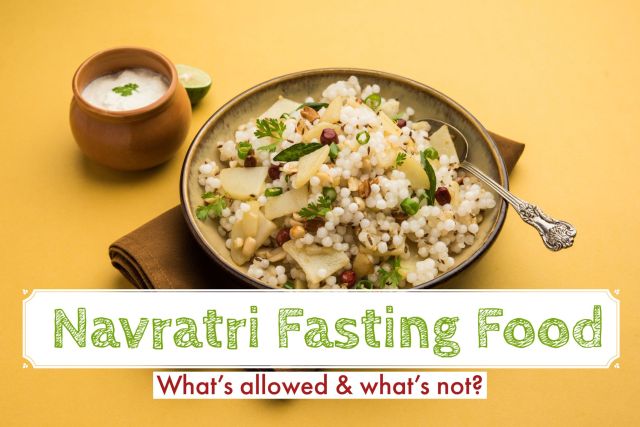Makhana, also known as Fox Nuts or Lotus Seeds, is not only delicious but also packed with essential nutrients. This Makhana Kheer (Lotus Seeds Pudding) recipe is one of the tastiest ways to include Makhana in your Navratri fasting menu. It is luxurious in flavor, creamy in texture, and highly addictive. You can’t have just a bowl. 🙂
It is made with nutritious Makhana (fox nuts or lotus seeds), milk, and jaggery, and flavored with aromatic spices. This creamy kheer is a delightful treat for the taste buds. Let’s dive into the recipe and add some sweetness to your festivities.
What is Makhana?
Makhana, also known as fox nuts and lotus seeds, originates from the seeds of the Lotus flower. It has always been an integral part of Ayurvedic and traditional Indian medicine for its numerous health benefits. But recently, it has gained popularity as a versatile and nutritious snack option. It has become a pantry staple among health-conscious people and food enthusiasts alike.
Health Benefits of Makhana
Makhana is not only delicious but also packed with nutrients. Snacking on them contributes to the overall health and well-being. Let’s dive into the health benefits of Makhana.
- Rich in Protein – Despite their small size, Makhana seeds are rich in protein, making them an excellent snack choice for vegetarians and vegans looking to meet their protein needs.
- Low in Calories – Makhana is naturally low in calories and fat. It can make a guilt-free snack option for health-conscious people.
- High in Fiber – Makhana is a good source of dietary fiber. It helps in better digestion and bowel movements.
- Gluten-Free – It is naturally gluten-free. That is why, it is perfect for those sensitive to gluten.
- It supports Heart Health and is Rich in Antioxidants.

What is the Navratri Festival?
Navratri (also known as Navaratri or Navrate), is a joyous Hindu festival. It is celebrated over 9 to 10 days. “Navratri” is a word from the Sanskrit language – Nav means nine and Ratri means night. This festival is celebrated two times a year, once in the spring (Chaitra Navratri) and once in the autumn (Sharad Navratri). Sharad Navratri falls during September or October and is widely celebrated all across India.
One of the main aspects of Navratri is fasting (known as Vrat or Upvas). During fasting, devotees avoid eating some foods, like grains, pulses, onions, garlic, alcohol, and non-vegetarian items. But they eat fasting food items like fruits, nuts, dairy products, etc.

What food items are allowed (or not) in Navratri?
Food items that are not allowed during the Navratri season are as follows:
- Onion and Garlic: They are Tamsik in nature and hence not consumed.
- Lentils and Pulses like moong dal, chana dal, kidney beans, chickpeas, etc.
- Grains and their flours like wheat flour, gram flour (besan), etc.
- Eggs, Non-Vegetarian Food Items like chicken.
- Alcohol (some people avoid smoking too).
- Salt
- Canned Food Items
Food items that are allowed during the Navratri season are as follows:
- Vegetables like potato, tomato, arbi, cucumber, carrot, bottle gourd, eggplant, pumpkin, etc.
- Fruits
- Dairy Products
- Coconut
- Nuts and Seeds
- Quinoa, Buckwheat, Little Millet (Samai or Samak), Water Chestnut Flour (Singhade Ka Aata).
- Spices like cumin seeds, red chili powder, turmeric powder, cardamom, carom seeds (ajwain), cinnamon, cloves, black pepper, etc.
- Rock Salt
Everybody has their own beliefs and follows their own rules during the fasting period. That is why, I suggest you adjust the recipes based on how you follow your fasting and celebrate Navratri.
Is this recipe Vegan?
This Makhana Kheer (Lotus Seeds Pudding) recipe is made with cow milk. But you can substitute that with any plant-based milk of choice like almond milk to make it vegan.
Also, roast makhana without ghee. You can even replace ghee with coconut oil to make it vegan.
Ingredients List – for quick reference

Step-By-Step Recipe Instructions


More Navratri Fasting Recipes
- Roasted Makhana
- Quinoa Pulao
- Amaranth and Dates Energy Bars
- Quinoa Cutlets
- Sabudana Thalipeeth
- Sabudana Khichdi
Conclusion
Because of its health benefits and versatility, this superfood deserves a place in your kitchen and your regular diet. Whether enjoyed as a crunchy snack, a nutritious addition to meals, or a flavorful ingredient in sweet treats, Makhana offers endless possibilities for delicious and wholesome eating.
So, why not stock up on it and explore the delights of Makhana in your kitchen today? Your taste buds and your body will thank you for it!
If you try this recipe, please share it on Instagram and tag us @thefearlesscooking. We love seeing your recreation of our recipes.
Happy Cooking. 🙂
Love from us.
Richa













Tell us what you think